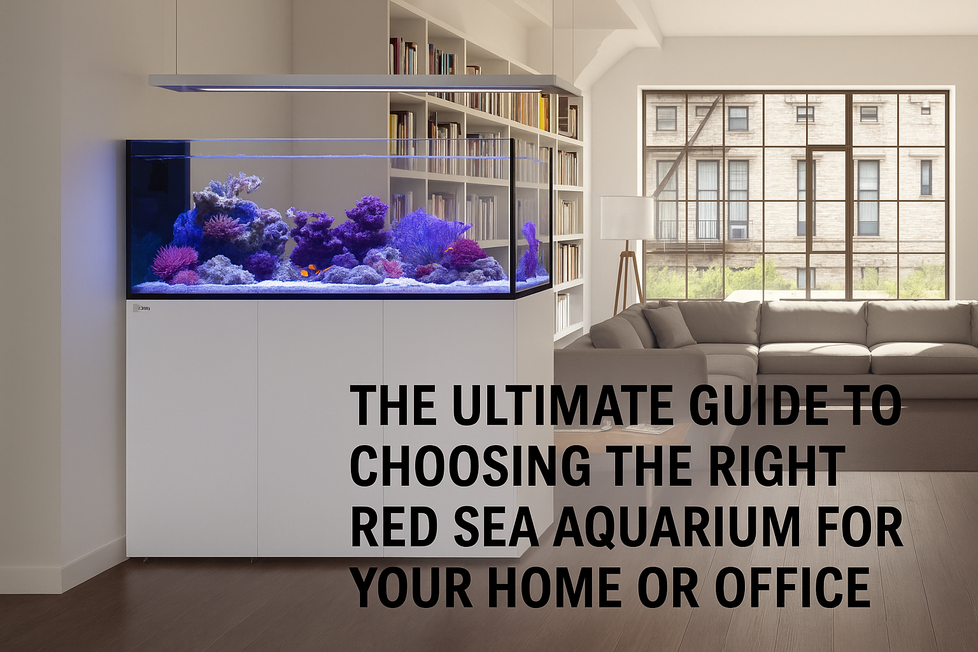Cycling your aquarium is a crucial step to ensure a healthy and stable environment for your fish. This process establishes beneficial bacteria that break down harmful toxins in the water, creating a safe habitat for aquatic life. In this guide, we'll walk you through the steps of cycling your aquarium, whether you're a beginner or an experienced aquarist.
What is Aquarium Cycling?
Aquarium cycling refers to the process of establishing beneficial bacteria in your tank's filtration system and substrate. These bacteria convert harmful ammonia produced by fish waste and decaying organic matter into less harmful substances like nitrite and then nitrate. This cycle is essential to maintain water quality and keep your fish healthy.
Why is Cycling Important?
Without proper cycling, ammonia and nitrite levels can quickly reach toxic levels, stressing or even killing your fish. Cycling ensures a balanced environment where beneficial bacteria keep these toxins in check, providing a stable and safe habitat for your aquatic pets.
Steps to Cycle Your Aquarium
1. Set Up Your Aquarium
Before you begin the cycling process, ensure your aquarium is fully set up. This includes:
- Placing the tank on a sturdy surface
- Adding substrate and decorations
- Filling the tank with water
- Installing the filter and heater
2. Add an Ammonia Source
To kickstart the cycling process, you'll need an ammonia source. There are two main methods:
Fishless Cycling
- Pure Ammonia: Add pure ammonia to the tank to reach a concentration of 2-4 ppm (parts per million).
- Fish Food: Place a small amount of fish food in the tank. As it decomposes, it releases ammonia.
Fish-In Cycling
- Add a few hardy fish to the tank. Their waste will produce the necessary ammonia for cycling.
3. Test Water Parameters
Regularly test your water for ammonia, nitrite, and nitrate levels using a water test kit. Initially, you will see a spike in ammonia, followed by nitrite, and finally, nitrate.
- Ammonia: Toxic to fish; levels should eventually drop to zero.
- Nitrite: Also toxic; should drop to zero as nitrate levels rise.
- Nitrate: Less harmful; aim for levels below 40 ppm.
4. Monitor and Maintain
- Daily Testing: During the initial stages, test the water daily to monitor ammonia and nitrite levels.
- Water Changes: Perform partial water changes if levels become dangerously high, especially during fish-in cycling.
- Add Beneficial Bacteria: Consider using bacterial supplements to speed up the cycling process.
5. Patience is Key
Cycling can take anywhere from 2 to 8 weeks. Patience is crucial during this period. Rushing the process can result in an unstable environment and harm your fish.
6. Completing the Cycle
Your aquarium is fully cycled when:
- Ammonia levels are zero
- Nitrite levels are zero
- Nitrate levels are rising
Once these conditions are met, you can gradually add more fish to your tank.
Maintaining a Cycled Aquarium
To keep your aquarium healthy:
- Regular Water Changes: Perform weekly water changes of 10-20% to maintain water quality.
- Monitor Water Parameters: Regularly test for ammonia, nitrite, and nitrate to ensure levels remain safe.
- Avoid Overfeeding: Excess food can decay and produce harmful ammonia.
- Clean the Filter: Rinse filter media in tank water (not tap water) during water changes to preserve beneficial bacteria.
Conclusion
Cycling your aquarium is an essential process to create a safe and healthy environment for your fish. By following these steps and maintaining regular care, you'll ensure a thriving aquatic habitat. Remember, patience and consistency are key to successful aquarium cycling.
Ready to start your aquarium journey? Follow this guide and enjoy a beautiful, thriving aquatic world in your home.


